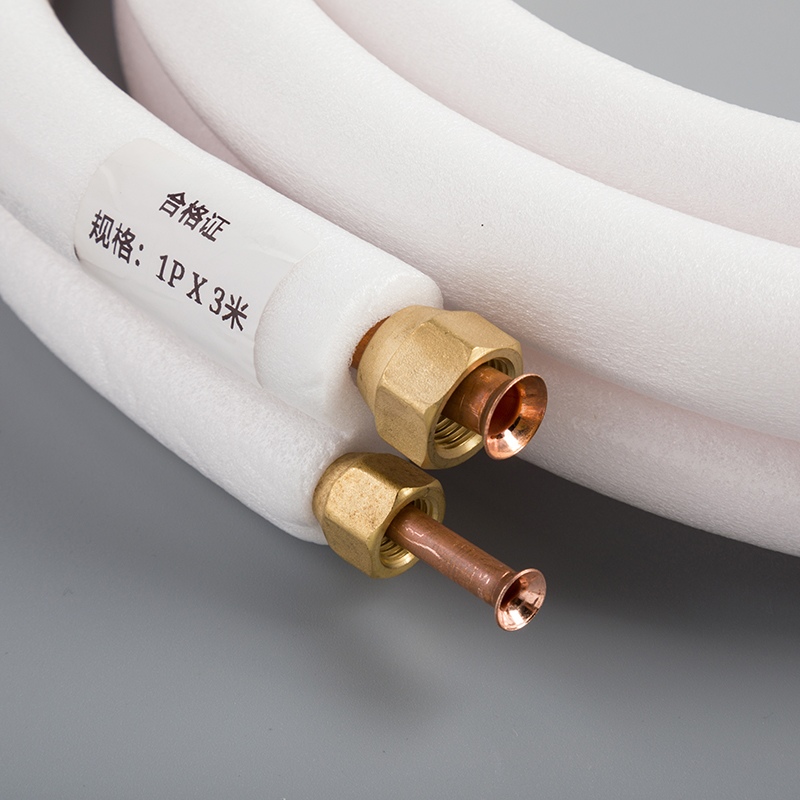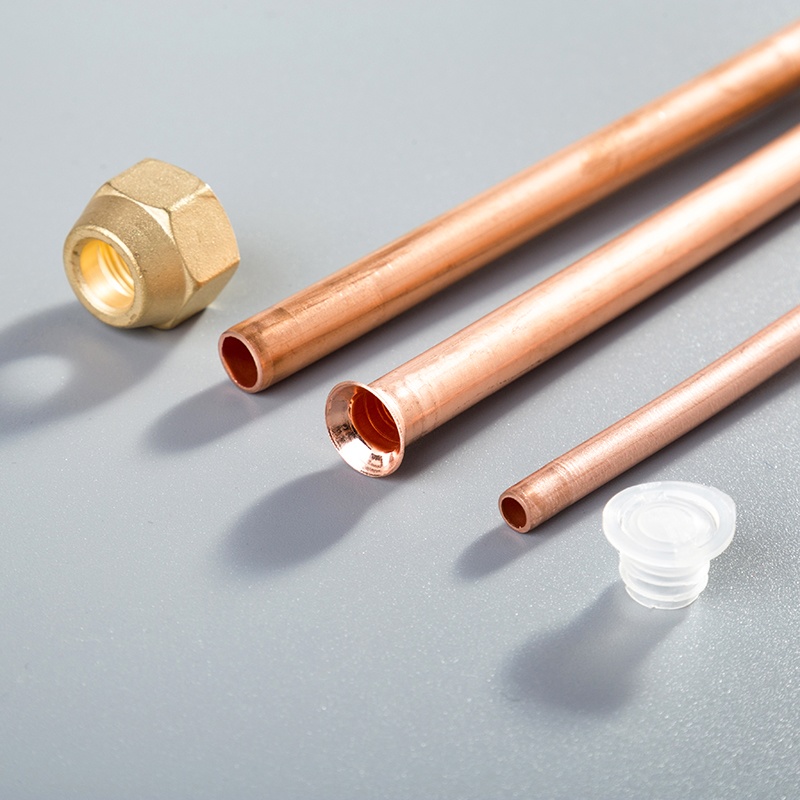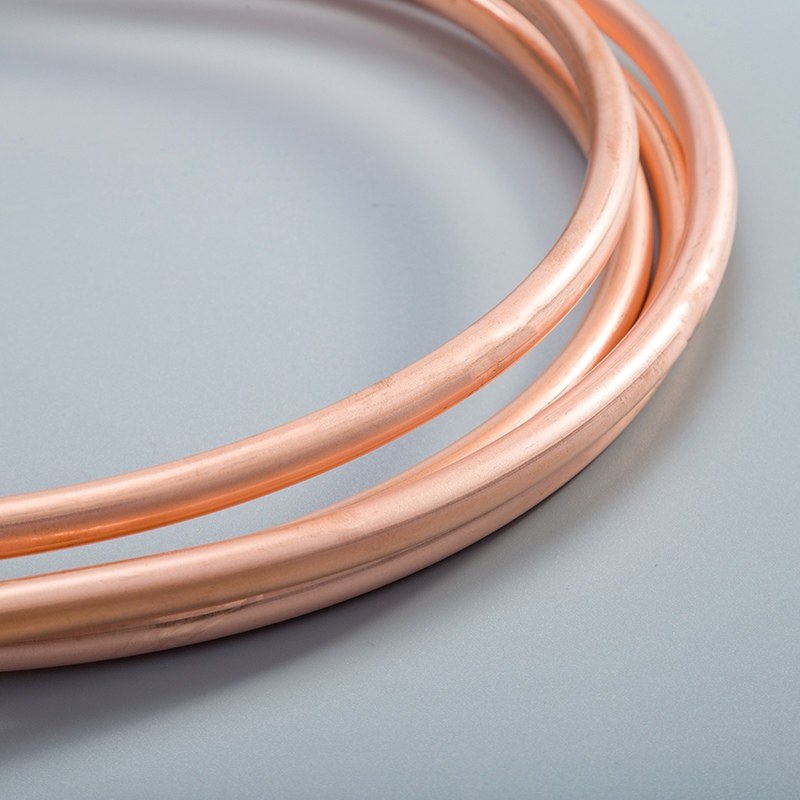Top Copper Pipes for Air Conditioners: A Comprehensive Review

Copper pipes play a vital role in air conditioning systems, offering exceptional thermal conductivity and durability. This blog aims to provide a comprehensive review of the top harga copper pipe air cond for air conditioners, focusing on their material quality, performance, installation, maintenance, cost, and overall value. By evaluating key criteria such as corrosion resistance and longevity, readers can make informed decisions when selecting insulated copper pipe for their air conditioning needs. Additionally, we will discuss the benefits of using hot copper pipe air conditioner and the importance of a reliable ac compressor sho in ensuring optimal system performance.
Material Quality and Durability

When considering harga copper pipe air cond for air conditioning systems, it is crucial to assess the material quality and durability of the copper pipes. Understanding the different types of copper pipes available in the market can help consumers make informed decisions based on their specific needs.
Types of Copper Pipes
Type K Copper Pipes
Type K Copper Pipe stands out as a top choice due to its thick wall construction, making it highly durable and suitable for various applications such as water distribution, fire protection, oil systems, and HVAC installations. This type of copper pipe is available in both rigid and flexible forms, providing versatility for different projects.
Type L Copper Pipes
Type L Copper Pipe, on the other hand, is commonly used for interior plumbing purposes, fire protection systems, and certain HVAC applications. It comes in rigid and flexible variations, offering adaptability for repairs or replacements in residential settings. While not as thick as Type K, Type L remains a reliable option for a wide range of applications.
Type M Copper Pipes
Type M Copper Pipe is thinner compared to Type K and Type L pipes, making it a cost-effective choice for repairs, extensions, or interior water supply lines. Although not universally accepted by all plumbing codes, Type M copper pipe's affordability and ease of handling make it popular among DIY enthusiasts for residential projects.
Durability Factors
Corrosion Resistance
Copper pipes are renowned for their exceptional corrosion resistance properties. This feature ensures that the pipes can withstand harsh environmental conditions and chemical exposures over an extended period. The corrosion-resistant nature of copper pipes contributes significantly to their longevity and reliability in air conditioning systems.
Longevity
One of the key advantages of using copper pipes in air conditioners is their remarkable longevity. With proper maintenance and installation, copper pipes can last for decades without compromising performance. Their robust build quality and resistance to wear ensure that they provide consistent functionality throughout their extensive lifespan.
Performance in Air Conditioning Systems
In air conditioning systems, copper pipes excel due to their superior thermal conductivity, ensuring efficient heat transfer and energy savings.
Thermal Conductivity
Copper Pipes outperform PVC pipes significantly in thermal conductivity, with a rating of around 400 W/mK compared to PVC's 0.19 W/mK.
The high thermal conductivity of copper pipes makes them ideal for heating water quickly and maintaining temperature longer.
Heat Transfer Efficiency
When it comes to heat transfer efficiency, copper pipes are unmatched in their ability to swiftly transfer heat throughout the system.
This efficiency ensures that air conditioners equipped with copper pipes can cool or heat spaces effectively without energy wastage.
Energy Savings
Utilizing copper pipes in air conditioning systems leads to substantial energy savings due to their efficient heat transfer properties.
The enhanced energy efficiency of copper pipes contributes to lower utility bills and reduced environmental impact.
Pressure Handling
In terms of pressure handling, copper pipes exhibit remarkable tolerance for high pressures, ensuring the integrity of the entire system.
The high-pressure tolerance of copper pipes guarantees safe and reliable operation under varying conditions.
High-Pressure Tolerance
Copper pipes, known for their durability, can withstand high pressures without compromising performance or safety.
The robust construction of copper pipes ensures that they maintain structural integrity even under extreme pressure conditions.
Safety Considerations
When considering safety aspects, copper pipes provide a secure and dependable solution for air conditioning systems.
The reliability of copper pipes under pressure contributes to the overall safety and longevity of the entire air conditioning setup.
Installation and Maintenance

Ease of Installation
Installing copper pipes in air conditioning systems is a straightforward process that offers various benefits. The flexibility and bendability of copper pipes allow for easy maneuvering around obstacles, making them ideal for intricate installations. When it comes to compatibility with fittings, copper pipes seamlessly integrate with different components, ensuring a secure and leak-free connection.
Maintenance Requirements
Maintaining copper pipes in air conditioners is essential to ensure optimal performance and longevity. Regular cleaning and upkeep of the pipes prevent debris buildup and corrosion, preserving their efficiency. In case of damage, prompt repair and replacement of any faulty sections are crucial to prevent leaks and maintain the integrity of the entire system.
Cost and Value
Initial Cost
Price Comparison
Type L is commonly used for natural gas lines and outdoor locations, while Type M is predominantly utilized for residential water supply. In contrast, Type K is specifically reserved for underground applications.
When comparing Type L and Type M, it's essential to note that Type L features thicker walls and is primarily employed in hot and cold water plumbing scenarios. On the other hand, Type M finds its niche in heating applications.
Budget Options
Comparing PVC pipes with copper pipes reveals a significant difference in longevity and maintenance requirements. While PVC pipes are more cost-effective initially, copper pipes offer a prolonged lifespan with reduced maintenance needs.
When considering materials for piping systems, it's crucial to acknowledge that copper pipes are generally pricier than alternative plastic options like PEX. However, the durability and longevity of copper pipes often outweigh the initial investment.
Long-Term Value
Cost-Effectiveness
The cost-effectiveness of different types of copper pipes varies based on their specific applications. For instance, Type M's thin walls make it ideal for interior plumbing needs, offering a balance between affordability and functionality. Conversely, Type L caters to outdoor water service requirements with its thicker walls ensuring durability.
Evaluating the long-term value of using copper piping over alternative materials underscores its flexibility, temperature resistance, and bacteriostatic properties. These characteristics contribute to the overall cost-effectiveness of copper pipes in various applications.
Return on Investment
Investing in high-quality copper piping systems can yield substantial returns over time due to their extended lifespan and minimal maintenance requirements. The initial investment in premium copper pipes translates into long-term savings through reduced repair costs and enhanced system reliability.
Considering the return on investment aspect when selecting piping materials emphasizes the importance of prioritizing quality and durability for sustainable and efficient air conditioning systems.
Copper pipes stand as the preferred choice for air conditioning systems, endorsed by installers worldwide for their reliability and recyclability. The increasing demand for air-conditioning systems fuels the market for harga copper pipe air cond, emphasizing copper's exceptional thermal conductivity and corrosion resistance. Copper's durability, efficient heat transfer properties, and ability to handle high pressure ensure reliable cooling and heating performance in residential HVAC systems. With copper's natural resistance to corrosion, longevity, and reliability are guaranteed, making it an ideal investment for sustainable air conditioning solutions.
See Also
Benefits of Opting for Copper Tubing in Air Conditioning
The Transformation of Air Conditioning with Copper Piping
The Essential Role of Copper Tubing in Efficient Cooling
Key Factors in the Copper Pipe Revolution for Cooling
Revealing the Enchantment: Copper Tubing in Air Conditioning


